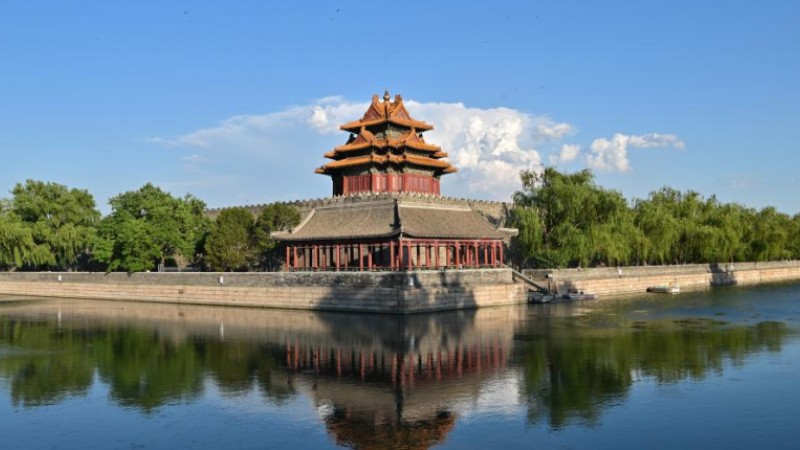How are sources of rivers determined?

Photo shows the Tuotuo River, the main source of the Yangtze River. (Xinhua/Zhang Hongxiang)
The sources of rivers are determined through painstaking exploration and scientific expeditions, taking into account various factors, Xu Ping, chief engineer of the Changjiang River Scientific Research Institute (CRSRI) of the Changjiang Water Resources Commission under China's Ministry of Water Resources, said in an interview with People's Daily.
Upstream water sources that are the farthest from the estuary of a river or contribute the most to the river’s replenishment are usually considered their sources, according to Xu.
In addition to "length" and "contribution to water replenishment", historical practices, the courses of rivers, and altitudes, among other factors, are also taken into consideration when determining the sources of rivers, Xu noted.
The Yangtze River, the longest river in China, which flows through 11 provinces in the country, has three sources: the Tuotuo River, which is considered the main source, the Damqu River in the south and the Qumar River in the north, according to Xu.

Photo shows Damqu River, the southern source of the Yangtze River. (Xinhua/Zhang Long)
Before the sources were finally determined, there had been controversy over whether the river’s main source was the Tuotuo River or Damqu River, Xu recalled.
The Tuotuo and Damqu rivers are about the same length, but the source of the Tuotuo River has the longest linear distance from the mouth of the Yangtze, Xu explained, adding that the course of the Damqu River is almost opposite to that of the Yangtze River.
In the late 1970s, a scientific expedition team made up of Chinese scientists traced the sources of the Yangtze River to Geladandong Snow Mountain, the highest peak in the Tanggula Mountains on the Qinghai-Tibet Plateau, for the first time, and later identified the three sources of the Yangtze River step by step, according to Xu.

Photo shows Qumar River, the northern source of the Yangtze River. (Xinhua/Zhang Long)
The sources of most of the world’s major rivers are areas with abundant water resources and diverse landforms, Xu noted.
China's Sanjiangyuan region, or the sources of three rivers - the Yangtze River, Yellow River, and Lancang River - is home to about 4,900 square kilometers of snow-covered mountains and glaciers, with approximately 200 billion cubic meters of glacier resources. Since the region plays an important role in the supply of fresh water resources in China and has extraordinary water conservation capacity, it fully deserves the name "China's water tower," Xu said.
Since 2012, Xu's team has carried out continuous expeditions to the sources of the Yangtze River, with the scope of research continuing to expand and the means of exploration becoming increasingly diversified, according to the engineer.
The expeditions have yielded rich fruits, enabling scientists to better understand the ecological conditions of relevant areas and providing a stronger basis for policies on the protection of the river sources, Xu said.
Photos
Related Stories
Copyright © 2023 People's Daily Online. All Rights Reserved.









